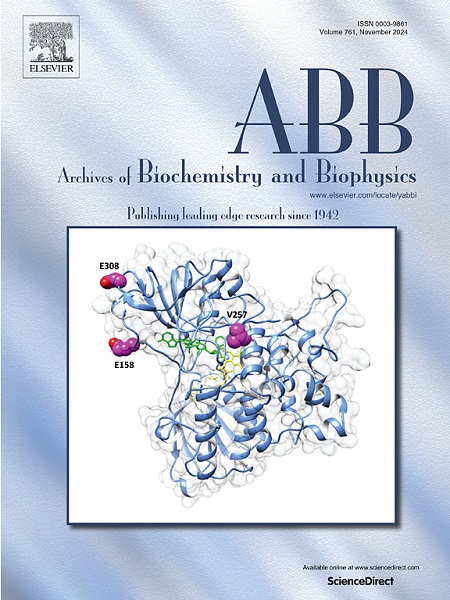Catalytic insights of acetolactate synthases from different bacteria
IF 3.8
3区 生物学
Q2 BIOCHEMISTRY & MOLECULAR BIOLOGY
引用次数: 0
Abstract
Acetolactate synthase (ALS) is an essential enzyme involved in the biosynthesis of platform chemicals acetoin and 2,3-butanediol in several microorganisms. In this study, we investigated the catalytic differences among three bacterial ALSs involved in the ligation of two molecules of pyruvate or 2-ketobutyrate. Based on the findings, we predicted three amino acid residues in each enzyme that caused a discrepancy in accordance with the multi-sequence alignment and molecular docking experiments: I398, A402, and T480 in Bacillus subtilis ALS; V400, Y404, and S482 in Listeria seleigeri serovar 1/2b ALS; and M394, H398, and G476 in Klebsiella pneumoniae ALS. Subsequently, we mutually mutated the residues in the three ALSs. The data obtained confirmed our inference that these three residues in each enzyme are truly correlated with substrate recognition, particularly in recognizing compounds that are larger than pyruvate, such as 2-ketobutyrate, benzaldehyde, and nitrosobenzene. This study further clarifies the biochemical traits of ALSs derived from various bacteria and expands the scope of ALS research.

不同细菌对乙酰乳酸合酶的催化作用。
乙酰乳酸合成酶(Acetolactate synthase, ALS)是参与多种微生物平台化学物质乙酰和2,3-丁二醇生物合成的必需酶。在这项研究中,我们研究了三种细菌als在连接丙酮酸或2-酮丁酸两分子过程中的催化差异。在此基础上,根据多序列比对和分子对接实验,我们预测了枯草芽孢杆菌ALS中每个酶中引起差异的三个氨基酸残基:I398、A402和T480;塞勒氏李斯特菌血清型1/2b ALS的V400、Y404和S482肺炎克雷伯菌ALS的M394、H398和G476。随后,我们相互突变了三个als中的残基。获得的数据证实了我们的推断,即每种酶中的这三个残基确实与底物识别相关,特别是在识别比丙酮酸大的化合物时,如2-酮丁酸盐、苯甲醛和亚硝基苯。本研究进一步阐明了来源于多种细菌的ALS的生化特性,扩大了ALS的研究范围。
本文章由计算机程序翻译,如有差异,请以英文原文为准。
求助全文
约1分钟内获得全文
求助全文
来源期刊

Archives of biochemistry and biophysics
生物-生化与分子生物学
CiteScore
7.40
自引率
0.00%
发文量
245
审稿时长
26 days
期刊介绍:
Archives of Biochemistry and Biophysics publishes quality original articles and reviews in the developing areas of biochemistry and biophysics.
Research Areas Include:
• Enzyme and protein structure, function, regulation. Folding, turnover, and post-translational processing
• Biological oxidations, free radical reactions, redox signaling, oxygenases, P450 reactions
• Signal transduction, receptors, membrane transport, intracellular signals. Cellular and integrated metabolism.
 求助内容:
求助内容: 应助结果提醒方式:
应助结果提醒方式:


